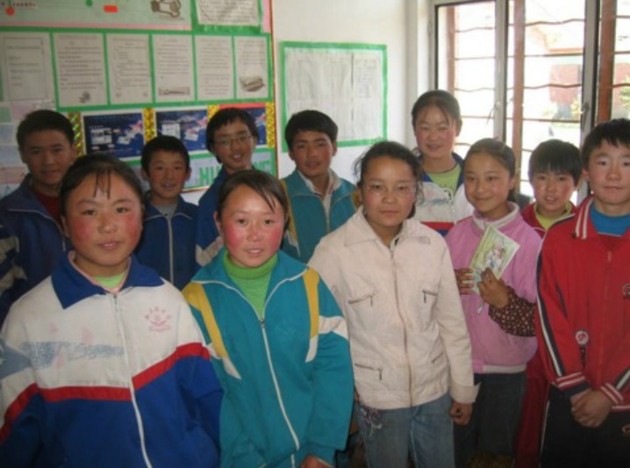
Two days ago I mentioned an interesting site by a high school student named Jocelyn Reckford, who had spent half of her elementary-school years in a Chinese public school and half in a public school in North Carolina. Her site tries to enumerate the strengths and weaknesses of the two systems as she experienced them.
Now, some response. First from Freddie deBoer of Purdue, who writes about the products of Chinese education as he sees them in the United States. He starts with a link to an item in Forbes, about China’s “stunning” superiority to the United States in a number of measures of academic performance.
This Forbes column makes a point very similar to one I stressed five years ago: that for all the obvious problems of U.S. education, and all the obvious strengths of China’s, these comparative rankings are deeply misleading. They usually take a handful of most elite, highest-performing schools in China (typically in Shanghai) and measure their graduates’ test scores against the whole sprawling expanse of U.S. student performance. DeBoer goes on to say:
As someone who works in a university with a very large Chinese population (around 6000 students) and in the world of assessment of second language skills, I can say that there is a widespread, but often little-discussed, feeling that this [JF: “this”=the test-score mismatch] is not the only way that China's supposed educational advantages are being oversold.
In particular, there's a great deal of discussion about a perceived disconnect between the applications of Chinese undergraduates and their actual abilities when they arrive on campus, particularly when it comes to their English-language ability. There's been some recent reporting on this, for instance here and here.
But it's hard to talk about these things. First, the US college system is now deeply dependent on the sky-high tuition that international students pay; here at Purdue, it's often said that the international students are essentially subsidizing the in-state tuition for Indiana students. Many schools are massively dependent on international student dollars, and Chinese student dollars particularly -- which means we're massively exposed to fluctuations in the Chinese economy.
Second, a lot of the people who are in the best position to identify these problems, people like myself working in linguistics or English or second language writing, are also those who have worked for years to make American colleges more open and accepting towards international students. People from that world are naturally loath to say anything that might be seen as perpetuating stigma.
Regardless of the broader truth, I do think it's worth saying that many people I know are absorbing a deeply incomplete picture of the Chinese education system, particularly when it comes to the international metrics on which China does so well. There are untold millions of Chinese students struggling in rural poverty, who we have a lot of reason to expect would not perform nearly as well as their counterparts in China's urban enclaves, but they are written out of the data in many ways. Any discussion of American schooling in comparison to Chinese has to consider that aspect.
I agree, and have tried to emphasize this point in reports from some of the vast developing-but-still-poor reaches of interior China. I don’t imagine that the students you see in the opening photo are factored into the international comparison. One more response after the jump.
***
A reader with experience in Taiwan writes to say that the elementary-school site offers ...
… a good overall comparison of two starkly different school systems. The money quote [from the site] was:
“In many cases, the teachers would like to take a lesson from American schools and concentrate more on imagination and resourcefulness. They say it is the parents who want to keep the focus on objective assignments, drills, and tests to prepare students for exams. The dreaded college entrance exam, the gao kao, looms like a storm cloud over the entire school experience.”
Same happened some years ago in Taiwan. Teachers wanted to focus more on student health so tried to increase time spent on PE. The experiment ended when parents forced teachers to stop wasting time on PE, and to get back to preparing for the Gao Kao (Lien Kao in Taiwan).
Any understanding of Chinese culture has to begin with how a "repeat after me" education focussed entirely on objective tests affects communication skills, analytic thinking, teamwork, creativity, imagination and initiative.
China does not have to be Westernized but it does need to be modernized, and that starts with changing the education system. I have no idea how that might be done.